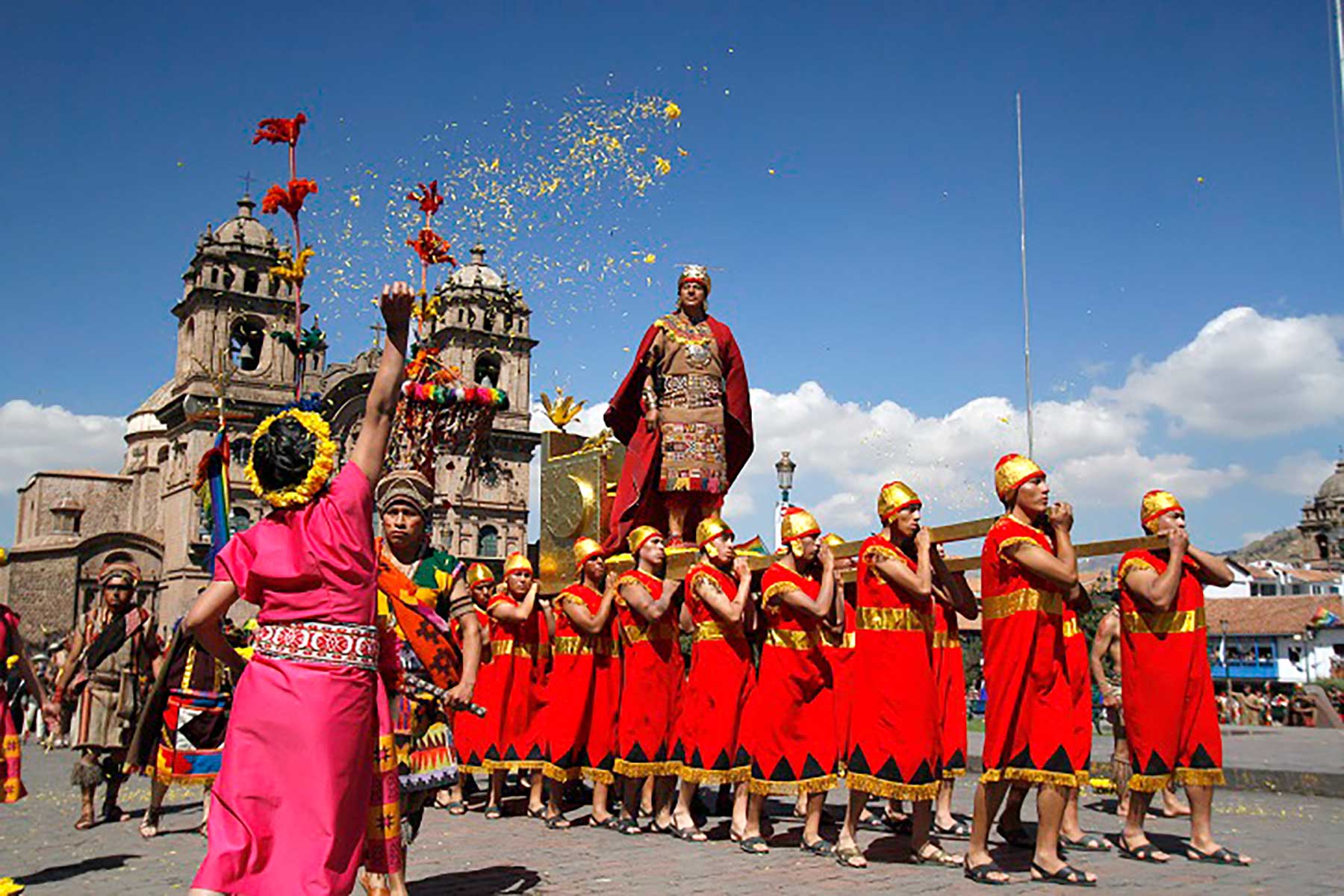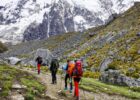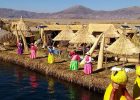Cusco, the ancient capital of the Inca Empire and Peru’s cultural center, is a place full of energy, especially during its vibrant festivals and traditions. Every year, the city and its surroundings host events that integrate religious, ancestral, cultural, and popular aspects, reflecting the diversity of its legacy.
Machu Picchu Wayna will provide you with all the information you need to discover the most important festivals in Cusco and plan your visit to experience the magic of these celebrations.
Religious Festivities in Cusco
Lord of the Earthquakes Festival
The Lord of the Earthquakes Festival in Cusco honors a crucified image of Jesus Christ, known as the “Taytacha of the Earthquakes,” venerated in the Cathedral of Cusco.
Its origin dates back to 1650, when a devastating earthquake struck the city, and it is believed that the procession of this image helped calm the tremors. Since then, devotion to the Lord of the Earthquakes has become an annual tradition, highlighted by the Holy Monday procession during Holy Week, drawing thousands of faithful to the streets of Cusco.
Lord of Qoyllority Procession
The Lord of Qoyllority procession blends Catholic faith with Andean traditions. Thousands of pilgrims, especially from nearby communities, ascend to the sanctuary located over 4,800 meters above sea level, where they participate in traditional dances, like the “ukukus” (bear costumes), and perform religious and Andean rituals honoring the Pachamama and the Apus.
In 2011, it was recognized by UNESCO as Intangible Cultural Heritage of Humanity.
Corpus Christi Festival
Corpus Christi is one of the most important religious celebrations of the year in Cusco. This festival, held 60 days after Easter, honors the real presence of Jesus Christ in the Eucharist. During the celebration, images of Cusco’s most venerated saints, along with the Blessed Sacrament, are carried through the main streets in a grand procession, attracting thousands of devotees.
The event also features traditional dances, music, and great displays of popular devotion, showcasing the fusion of Catholic traditions with local customs.

Holy Week
Holy Week in Cusco is highlighted by the Lord of the Earthquakes procession and the use of ñucchu flowers, a symbol of sacrifice and devotion. Activities include solemn ceremonies and a variety of traditional dishes such as timpu.
Lord of Torrechayoc
This major religious and cultural celebration in Urubamba honors the province’s patron. It originated from the appearance of a miraculous cross on Torrechayoc Hill, attracting thousands of devotees. The festival takes place between May and June, with the main day on May 19, featuring solemn masses, processions with the Lord’s cross, traditional dances, and gastronomic fairs.
Lord of Huanca
The Lord of Huanca Festival, celebrated on September 14 in Cusco, is an important religious pilgrimage to the sanctuary of the Lord of Huanca. Faithful participate in masses, dances, and processions, blending Catholic and Andean rituals. The festival expresses devotion and gratitude, strengthening community ties and the region’s cultural identity.
Cultural and Ancestral Festivities
Inti Raymi
The Inti Raymi, or Festival of the Sun, is an ancestral celebration honoring the god Inti, a central deity in the Inca worldview. It is held every June 24 in Cusco, coinciding with the winter solstice, marking a new agricultural cycle. Created by Inca Pachacutec, the festival symbolized gratitude and prayers for prosperity to the Sun.
It is celebrated in three main locations: Qorikancha, where the rituals begin; the Plaza de Armas, featuring traditional dances; and Sacsayhuamán, where the central act is reenacted with hundreds of participants. Declared Cultural Heritage of the Nation, Inti Raymi is a symbol of Andean identity and attracts thousands of visitors each year.
The ancestral ceremony of Inti Raymi includes processions, rituals, and a theatrical reenactment that draws visitors from all over the world.
Pachamama Day
Pachamama Day, celebrated every August 1st, is an Andean festivity dedicated to honoring Mother Earth, considered the source of life and fertility. On this day, communities perform offerings known as “pagos” or “despachos,” which include food, drinks, and coca leaves, symbolizing gratitude for the earth’s bounty and asking for future abundance.
Ch’iaraje
Ch’iaraje is an Andean celebration held on January 20 in the province of Canas. It features a ritual battle between local communities, where participants, armed with slingshots and sticks, simulate combats as offerings to the Pachamama, seeking soil fertility and good harvests. Alongside the battles, there are dances and rituals reflecting the duality and harmony of the Andean worldview.
Toqto Fights
Held in December, these ceremonial fights symbolize conflict resolution and the closure of agricultural cycles in high Andean communities.
Warachicuy
Warachicuy is an ancestral Andean ceremony marking the transition of youth into adulthood in Inca culture. During the rite, adolescents must pass tests of skill, bravery, and endurance to be recognized as adults and take part in community activities. It is celebrated annually at Sacsayhuamán on the third Sunday of September, featuring rituals, warrior dances, and competitions.
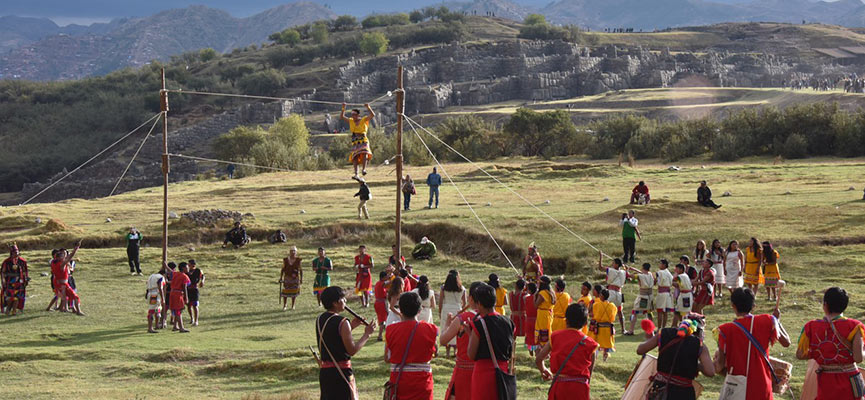
Popular Festivities
Carnivals in Cusco
In February, Cusco celebrates Carnival with parades, music, dances, and the traditional yunza. It is a lively and colorful festival full of joy and fun.
Santuranticuy Fair
The Santuranticuy Fair is a traditional Christmas celebration held every December 24 in the Plaza de Armas. It is considered the city’s largest Christmas event, where nativity figurines, crafts, and typical local products are sold.
Local artisans participate in the fair, offering products that reflect the fusion of religious beliefs and Cusqueñan culture. Additionally, the Santuranticuy Fair strengthens cultural identity and preserves ancestral traditions.
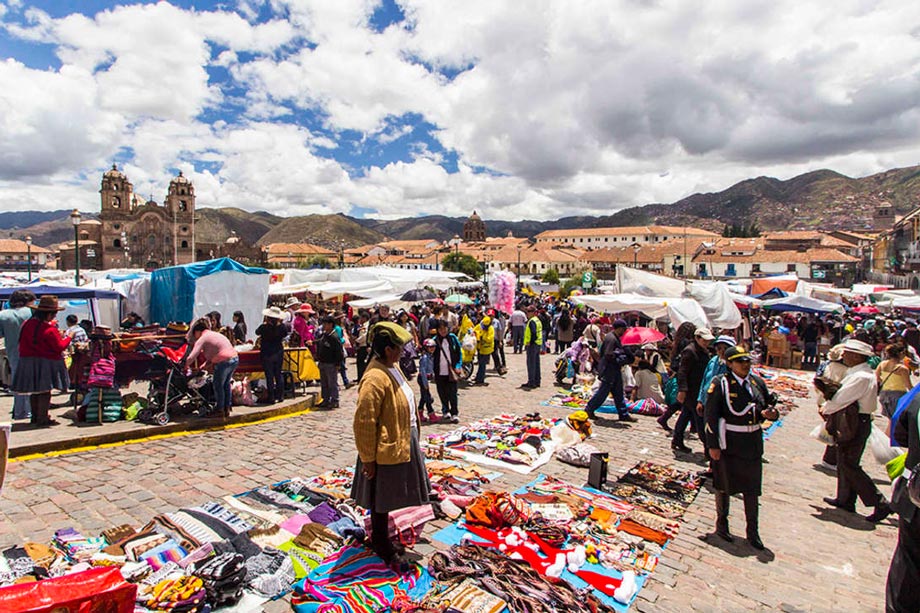
Tikaranticuy Fair
This fair, held in December, is dedicated to ornamental plants and gardening, promoting the biodiversity of the region.
Quillabamba Festival
In September, Quillabamba celebrates its anniversary with events such as coffee contests, food fairs, and traditional dances.
Festivities of Cusco’s Jubilee Month
Ollantaytambo Festival
The Ollantaytambo Festival, celebrated in June, honors Saints Peter and Paul, blending Andean traditions with Catholic influences. During the celebration, there are parades, folkloric dances, and rituals to the Pachamama to give thanks for the harvests. The festival reinforces the Sacred Valley’s cultural identity and keeps ancestral customs alive, attracting both locals and tourists.
San Sebastián Festival
Held on January 20, this festivity honors the patron saint with masses, processions, and festive activities.
Cruz Velacuy
Cruz Velacuy, celebrated on May 3 in Cusco, honors the Holy Cross, blending Catholic and indigenous traditions. Communities decorate crosses with flowers and ribbons, and organize processions, dances, and offerings. The festival also pays tribute to the Pachamama, seeking good harvests and prosperity. At the end, a cross is burned as a symbol of purification and protection for the next agricultural cycle.
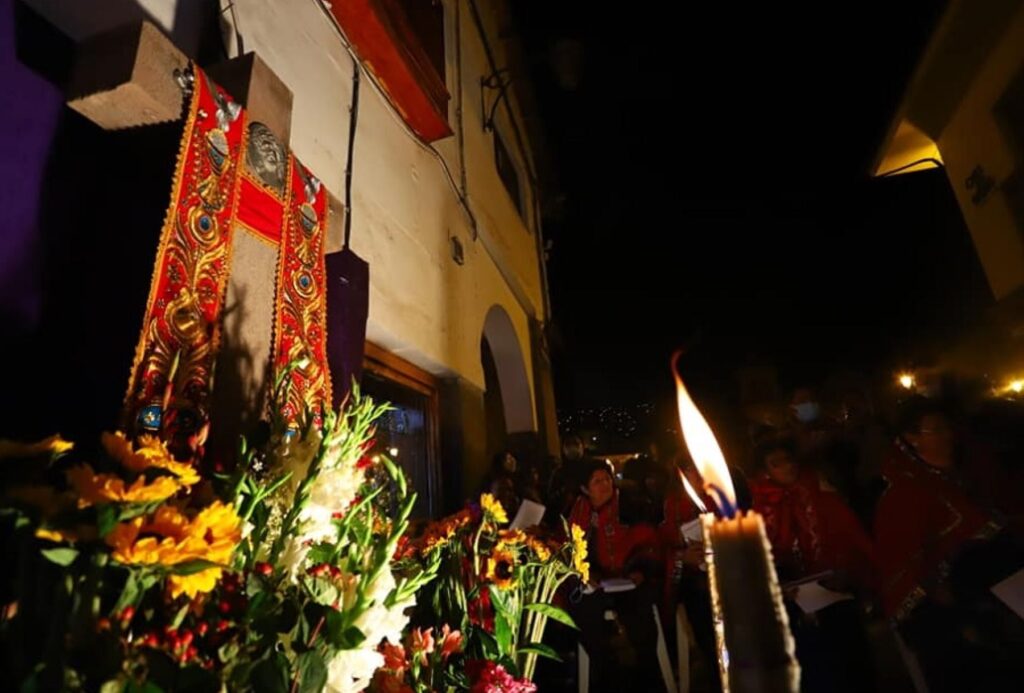
Pachamama Raymi
Pachamama Raymi, celebrated in August in the Andean communities of Cusco, is a festivity dedicated to honoring Mother Earth. During this celebration, rituals and offerings of food like corn and coca leaves are made to thank the Pachamama for the harvests and to ask for her protection. The event includes dances, songs, and ceremonies, reflecting the Andean worldview of respect and connection with nature.
